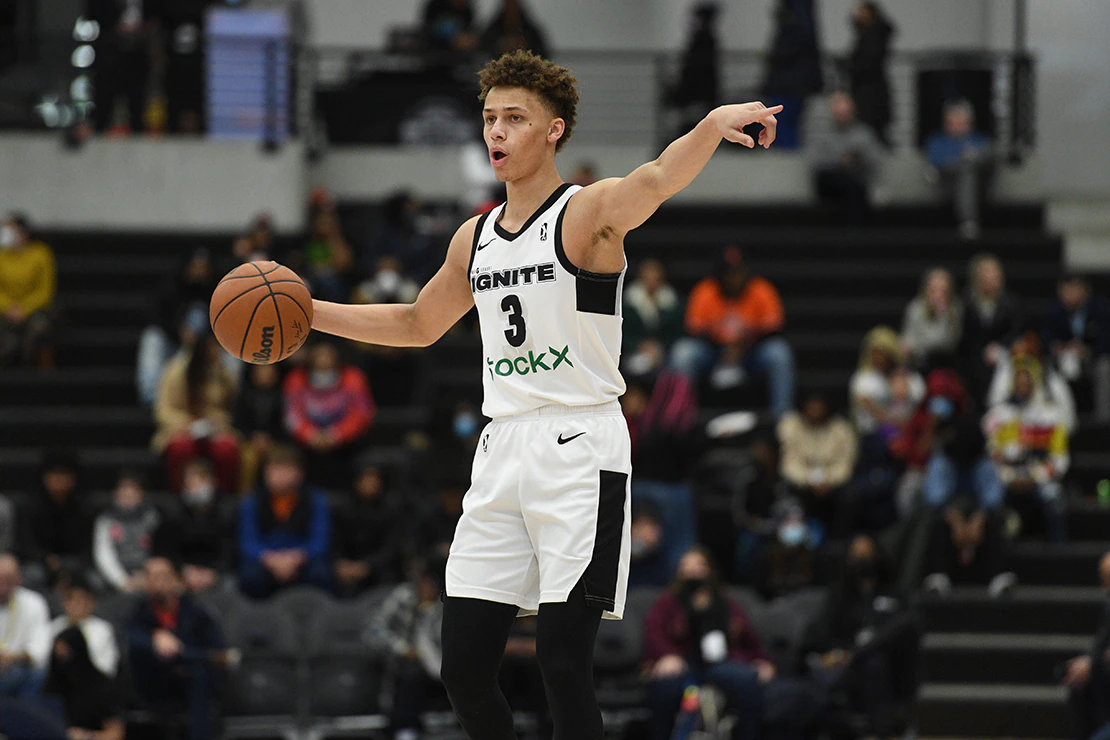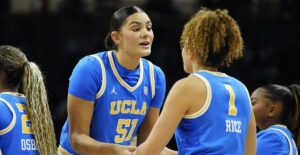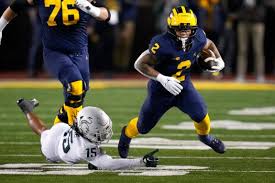Passing/Playmaking
Arguably the best part of Dyson Daniels’ game is his playmaking. Growing up in the NBA Academy system, Dyson suffered a bit to begin the season from what some have called “Academy Brain” (a term first seen used by PD Web). This term highlights the lack of risk-taking by lead guards from some of these academies, often trying to make the “correct play.”
Dyson’s comfortability in decision-making and playing free rose as the season progressed, and we saw him become more creative in finding his teammates and his shots. Daniels averaged 4.4 assists a game and 2.4 turnovers during the Showcase Cup, an AST:TO ratio of 1.83. These numbers changed to 5.8 assists and 2.8 turnovers a game, an AST:TO ratio of 2.07.
Dyson’s knack for rebounding and ability to push the ball and make outlet passes makes him an elite transition threat. His pinpoint precision allowed him to create many looks for players leaking out in transition. When he pushes the ball into the halfcourt, his patience allows his teammates to open up advantages as the defense attempts to set up.
His advantageous passing mentality enables him to identify and feed players who manage to create separation from their defenders. Occasionally, he overshoots his teammates on these passes or will fail to thread passes through defenders. Nevertheless, he only had six turnovers throughout the season coming from transition passes compared to 33 assists, a good sign that Dyson can be an effective break starter on an NBA team.
Dyson’s patience in the halfcourt was most impressive. When using screens, Dyson’s long frame and ability to contort his body (shoutout Australian Football) allows him to rise high, turn towards his target and dump the ball off over defenders to the big man.
His weak handle is mitigated by his quick burst and long strides, allowing him to beat first-level defenders often and get into the high paint area. Once there, he controls the space around him, either attacking the rim, finding an open teammate, or finishing over the defense with a deadly floater. He throws the defense into a panic by taking his time in this space, unsure whether to force up onto him or fall back when he slows down. They must then help off their man to provide extra rim protection, and it is then that Dyson can punish the defense by opening up these newfound passing lanes.
This displacement of the defense often led to open dump-offs to players like Michael Foster, Jessie Govan, and their backdoor cutters. Surrounded by motion and potentially a roll man with some gravity, Daniels’ ability to control and manipulate the space around him will make him a premier playmaker in the halfcourt.
Unfortunately, at times, this patience gets misconstrued for lack of mobility or lack of burst. Still, Dyson dispelled any questions about his athleticism at the NBA Combine. He finished top 15 in the three-quarter court sprint, 9th in lane agility, and first among all participants in the shuttle run.
At his workout with the Wizards, Dyson became the first player since 2018 to finish their 20 lines in 2 minutes drill (a more rigorous version of the drill known as “suicides”). Dyson may not be the flashiest athlete, but his ability to get downhill, long frame, and body contortion in the air to finish around the defense forces the defenders’ hand.
Daniels is not without flaws as a playmaker. His weak handle often led to turnovers when pressured and caused him to get trapped when bringing the ball up the court and forcing turnovers. Against smaller guards, Dyson’s inability to keep the ball tight allowed defenders to force live-ball turnovers and often drove himself into traffic, leading to a bad pass.
The “Academy Brain” often led to turnovers when passing due to him trying to make the “correct pass” rather than maybe making a riskier but more effective move. Teams can mitigate these flaws by putting him in the correct role as a playmaker.
Daniels’ role is best as a playmaker in the halfcourt or off of rebounds, compared to a lead guard. Having him bring the ball up the court may not be most effective, as the pressure could lead to quick turnovers or panic. Instead, having Dyson operate as a secondary playmaker frees up the team’s primary player to be effective off-ball, and Dyson’s off-ball movement and ability to court map like a point guard allow him to be effective in this role.
Getting rid of the “Academy Brain” comes with minutes, as we saw during his time at Ignite. The more free Dyson played, the more effective he was. Although this saw some high turnover games (4 or more turnovers in six of his last nine games), we also saw incredible passing displays.
These included an eight assist and 0 turnovers game against Santa Cruz on March 13th and a nine assists and one turnover game against Mexico City on January 9th. On this front, Daniels adds a playmaking wing to a team who can create for others while also being able to create for himself. And his ability to create for himself is a big part of why he is such a dominant playmaker.








